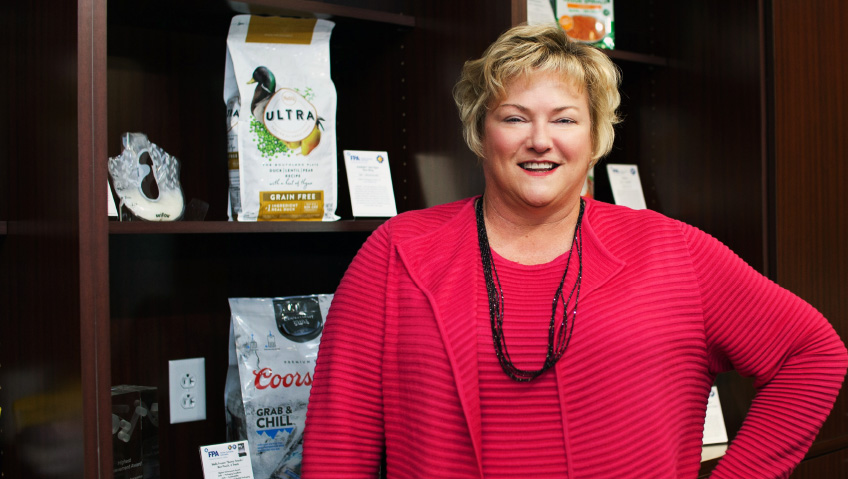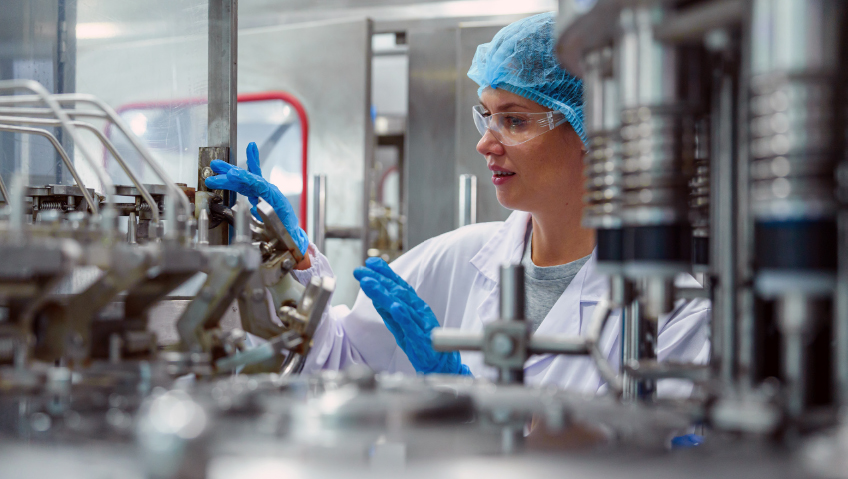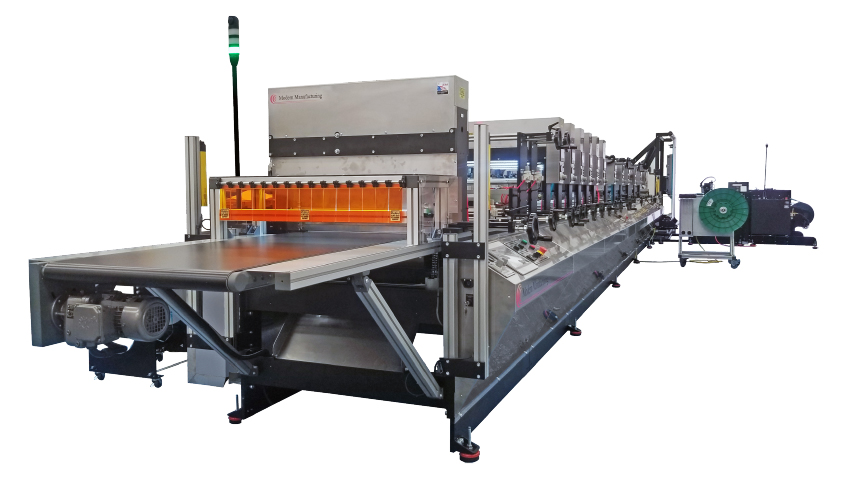In an era of climate change and its related disasters, the environmental sustainability of packaging has become a concern for most global citizens, not only for lobbyists and forward-thinking manufacturers. The Flexible Packaging Association (FPA) is acutely aware of the urgent need for innovation in the field and the obligation to cut down on waste.
From its base in Annapolis, Maryland, the FPA guides and advises flexible packaging manufacturers and industry suppliers. This refers to any protective pouch, packet, sachet, or soft wrapping typically made of paper, plastic, film, or aluminum foil to maintain the freshness and safety, cleanliness, and functionality of its contents. Plastic bags, labels, and other coverings based on these materials all qualify as flexible packaging.
This includes airtight food and beverage packaging for humans and pets, pharmaceutical and medical products, tools and equipment, cosmetics and personal hygiene items, and personal protective equipment, which all need protection from bacteria and other contaminants. Such products are typically packaged in sterile environments and then shipped to distribution facilities to reach their end users in perfect condition.
Typical waste bin-liners, whether for home use or medical and industrial waste, are also flexible plastics. Another large consumer of such materials is the e-commerce market, with packaging relying heavily on specialized materials like bubble wrap, air pillows, pouches, and foam wrapping. Considering the enormous demand for this entire spectrum of products around the world, it stands to reason that the industry is worth a sizeable amount of money.
Valued at well over $38.5 billion per annum and employing more than 79,000 people, the industry is superseded in the United States only by the corrugated cardboard packaging industry.
Alison Keane, FPA’s Chief Executive Officer and President, attributes the sector’s economic power to its sustainability. “The reason flexible packaging is number one worldwide and second only to corrugated cardboard in the U.S. is that it is the most sustainable solution for product manufacturers,” she says.
Its popularity is further ascribed to its versatility, as soft materials conform to most shapes and sizes. Flexible packaging also does this economically, providing manufacturers with ample savings both financially and in terms of waste. Its lack of unnecessary bulk leads to even more savings as less weight means cheaper transportation and easier handling when it comes to warehousing and distribution—all factors that translate into an overall reduced environmental impact.
But its greenhouse gas emissions savings do not only stem from reduced transportation; flexible packaging also contributes to tremendous food savings, keeping perishables fresher for far longer than was ever possible before. Flexible packaging “creates less waste at its end of life. It reduces food waste, which is the number one contributor of greenhouse gases from landfills,” Keane says, noting that the Association has “members who say that we can help feed the world and [eradicate] hunger,” since food must reach people before it spoils, and flexible packaging helps make that happen. “We think plastic is plastic—but not all plastic is created equal,” she continues.
In light of all this, the FPA advocates for flexible packaging and its stakeholders as its manufacturing processes consume lower volumes of resources like water and power than corrugated cardboard. Of course, these benefits also lead to savings in labor hours, transportation, and management of the infrastructure needed to manage both food and packaging waste. Thanks to flexible packaging, the demand for these resources is significantly reduced.
FPA members also benefit from the Association’s work as an industry champion, protecting the rights of manufacturers by working to mitigate burdensome regulations. The Association supports the evolution of the industry and its technologies to serve its stakeholders and end users alike. In addition, it creates ample opportunity for all involved to strengthen manufacturing and marketing networks by hosting events and researching market trends that give its members an innovative edge within global markets.
As part of this mandate, the Association also runs an annual packaging contest that has seen unprecedented growth over the past three years, despite COVID. Considerations such as sustainability, printing and technical specifications, visual impact, and innovation all set the winners apart from other entrants.
“The competition has spurred a lot of innovation. While flexible packaging is often the most environmentally sustainable solution for product packaging, it has challenges for full circularity as it is the least often collected for recycling and reuse,” Keane says.
Widespread enthusiasm promises to solve another big real-world issue. Despite being considered environmentally sustainable by the Association, gathering flexible packaging for recycling is a real headache. Some of the answers to this challenge came via the competition. These include compostable packaging and bio-based plastics formulated using naturally occurring materials rather than petroleum-based products.
At present, the reality is that the recycling loop is tricky to complete with flexible packaging, as existing recycling systems and curbside collections for cans, glass, and rigid plastics typically predate its existence and therefore fall short. “Currently, the only real solution… is the store drop-off program for clean and dry polyethylene films. While there is great access for consumers in this program, it is vastly underutilized, and there is often consumer confusion over what is recyclable and what is not,” Keane points out. Resterilizing used food packaging for reuse as food containers also comes with a range of its own challenges.
The result is an unpleasant truth: perfectly recyclable flexible packaging will find its way into our natural surroundings, stormwater systems, and landfills. To prevent this, the FPA supports well-crafted extended producer responsibility legislation, amongst other protocols, promising to secure the control and fiscal resources necessary to reimagine and update outdated recycling systems.
Initiatives like Materials Recovery for the Future (MRFF), the Hefty ReNew™ Program, and the Consortium for Waste Circularity are working diligently alongside private project owners to bring to life solutions that will incorporate flexible packaging into the end phase of the recycling loop. MRFF completed a real-life study of just over two years in 2022, concluding that flexible plastic packaging is recyclable with the right technology and handling processes.
There are also brands like Hefty, making recyclable and compostable plastics and packaging in reduced sizes to help curb waste. Its Hefty ReNew™ and Hefty® EnergyBag® Programs run from Greater Atlanta, Georgia across four states as far as Chattanooga, Tennessee, supporting consumers at over 790,000 addresses to redirect difficult-to-process plastics away from landfill and back into the recycling loop for repurposing, with specialized drop-off zones in participating cities.
Another tremendous driving force in the hunt for solutions is the Consortium for Waste Circularity, whose investment in out-of-the-box thinking is fueling its vision for a waste-free future devoid of landfills and trash incineration through the use of regenerative gasification to make syngas. In producing syngas, biological materials are heated to temperatures over 2,000°C to transform them into carbon monoxide and hydrogen. Developers claim that syngas can be used to create a vast range of materials that can be infinitely recycled.
Fast approaching its 75th birthday celebrations in 2025, the FPA has a long and proud history of doing groundbreaking work. Some members have been with the Association for 60 years, with American Packaging Corporation and Printpack being two. Part of the Association’s work is a three-decade-old annual industry report, alongside which is its packaging awards program, turning 67 this year.
The Association is also proud to number amongst its members the inventor of bubble wrap—Sealed Air Corporation. American engineer Alfred W. Fielding and Swiss inventor Marc Chavannes started the firm, coming up with what they initially thought would sell well as cool wallpaper in the shape of two layers of shower curtain melted together with air pockets trapped inside. The material now known as an addictive popping toy first saw use as greenhouse insulation before hitting the world stage in 1961 as one of the most protective packaging products.
The FPA’s team of seven brings a similar sense of fun to its work in the packaging industry. Each member has a particular area of expertise, namely a Director of Regulatory Affairs, a Counsel for Government Affairs, an Administrative Assistant and Accountant/Office Manager, a Director of Membership and Meetings, and a Vice President of Communications—all of whom will be joined later this year by a Director of Industry Information.
This small but potent group understands that teamwork is what makes this work. “[We] are truly a team; with a small staff, you have to be. Everyone helps everyone else. We always joke, ‘today I am your assistant, and tomorrow you are mine,’” Keane shares. And with the varying levels of experience, “We have a great balance of historical knowledge and fresh thinking.”
Another positive result of running such a smooth operation with frequent travelers was that, when COVID arrived, everyone could already work remotely. They kept the fun alive virtually with regular online get-togethers, lunches, and happy hours to catch up, interact, and keep spirits high.
The effort has been well worth it. Keane, who loves the industry for its future-focused innovation, notes that, since her arrival seven years ago, the Association has nearly quadrupled from a net worth of $1.2 million to $4 million. She attributes this expansion to a new dues structure underpinning its activism and growing membership. As the Association has seen consistent industry growth despite setbacks from a drop in demand for packaging over the pandemic period, it is confident that the future holds continuous evolution as consumers resettle into pre-COVID trends.
Looking at its current and future focuses, the FPA will invest much time into assisting in implementation of extended producer responsibility programs in states with the relevant legislation. There are currently only four such states in the United States. The goal is to implement next-generation recycling facilities that allow for the repurposing of flexible packaging in a safe and user-friendly manner. Once complete, the blueprint will be repeated across America wherever local governments share the Flexible Packaging Association’s vision for a waste-free future.






